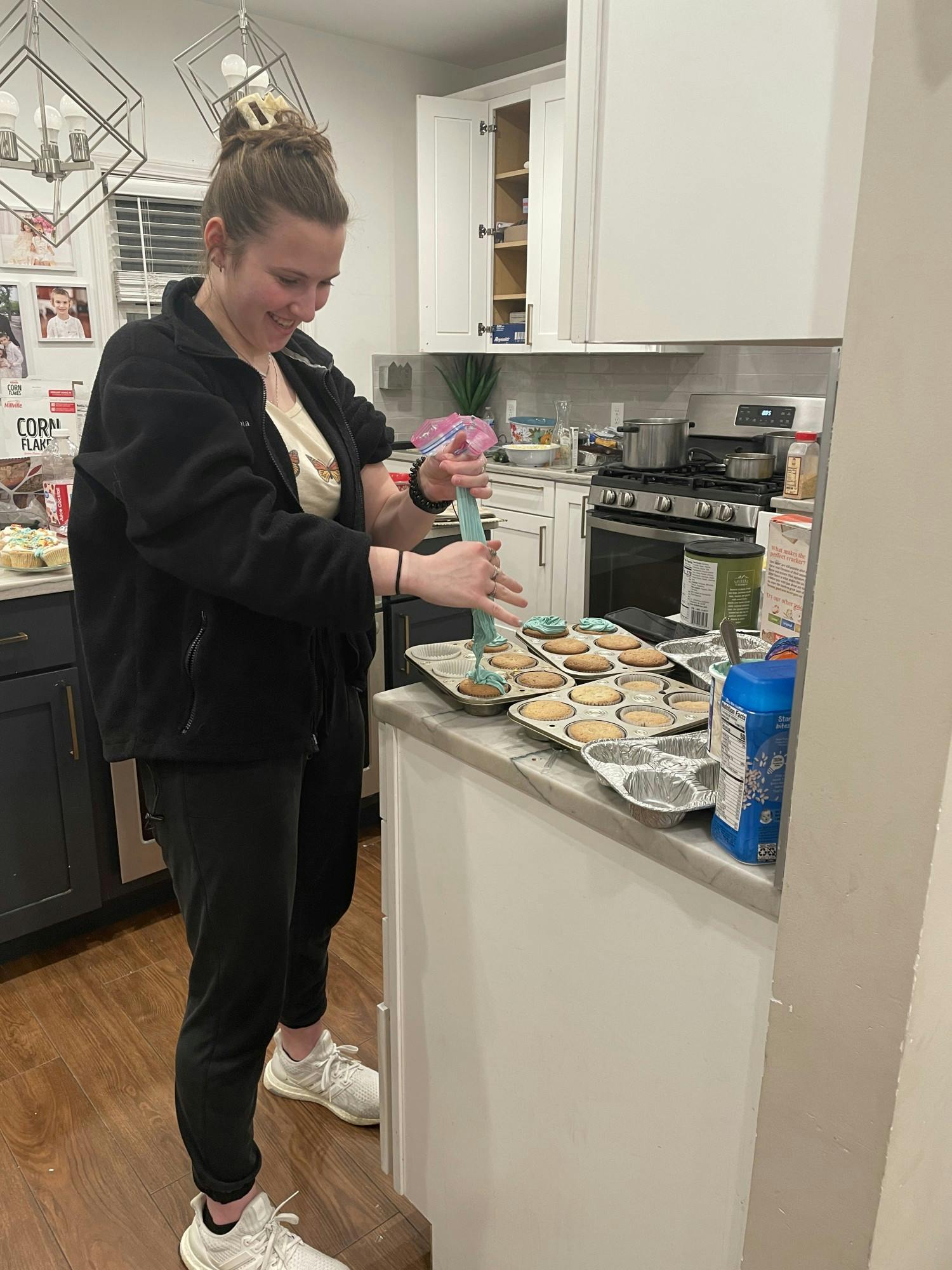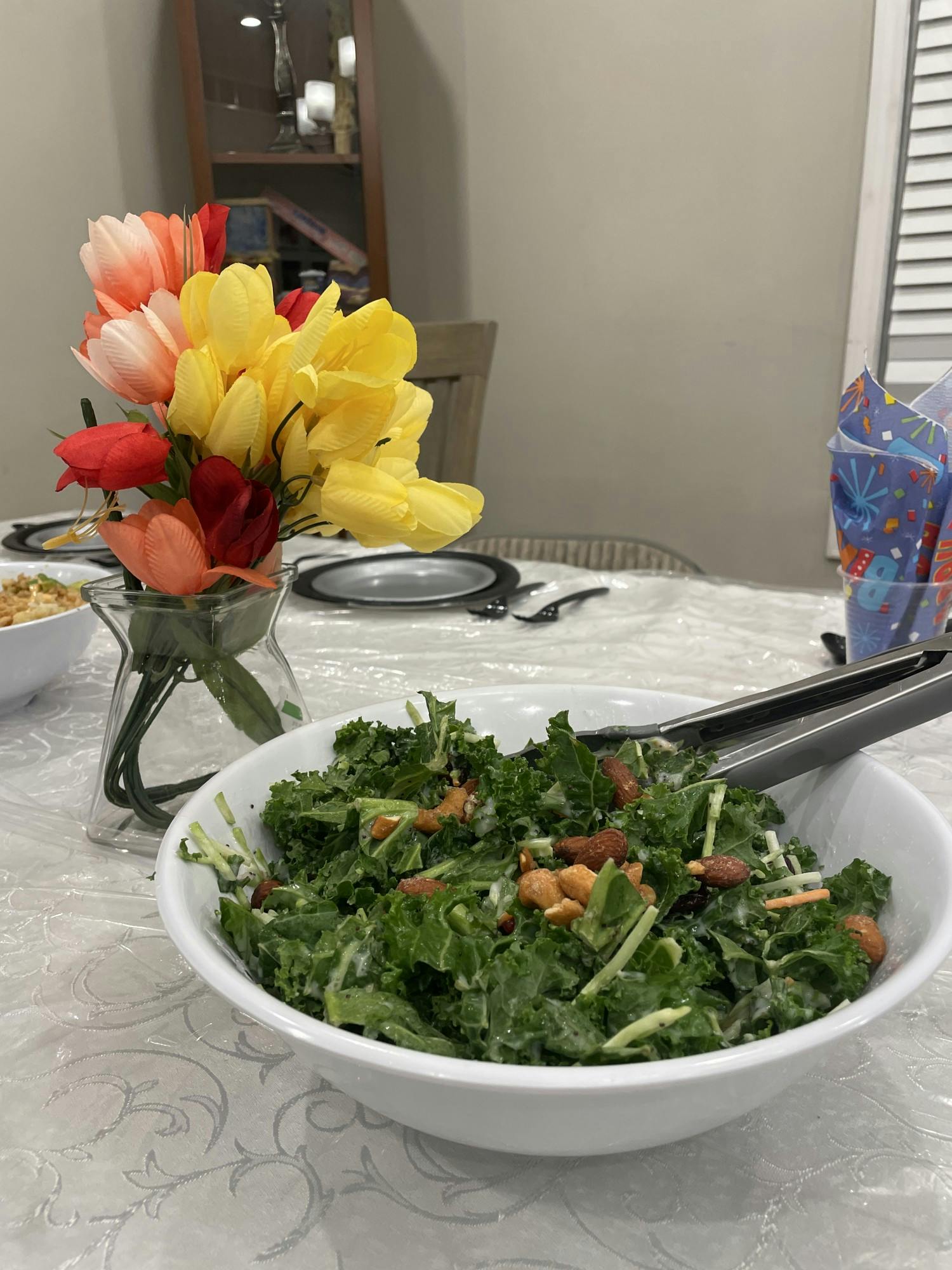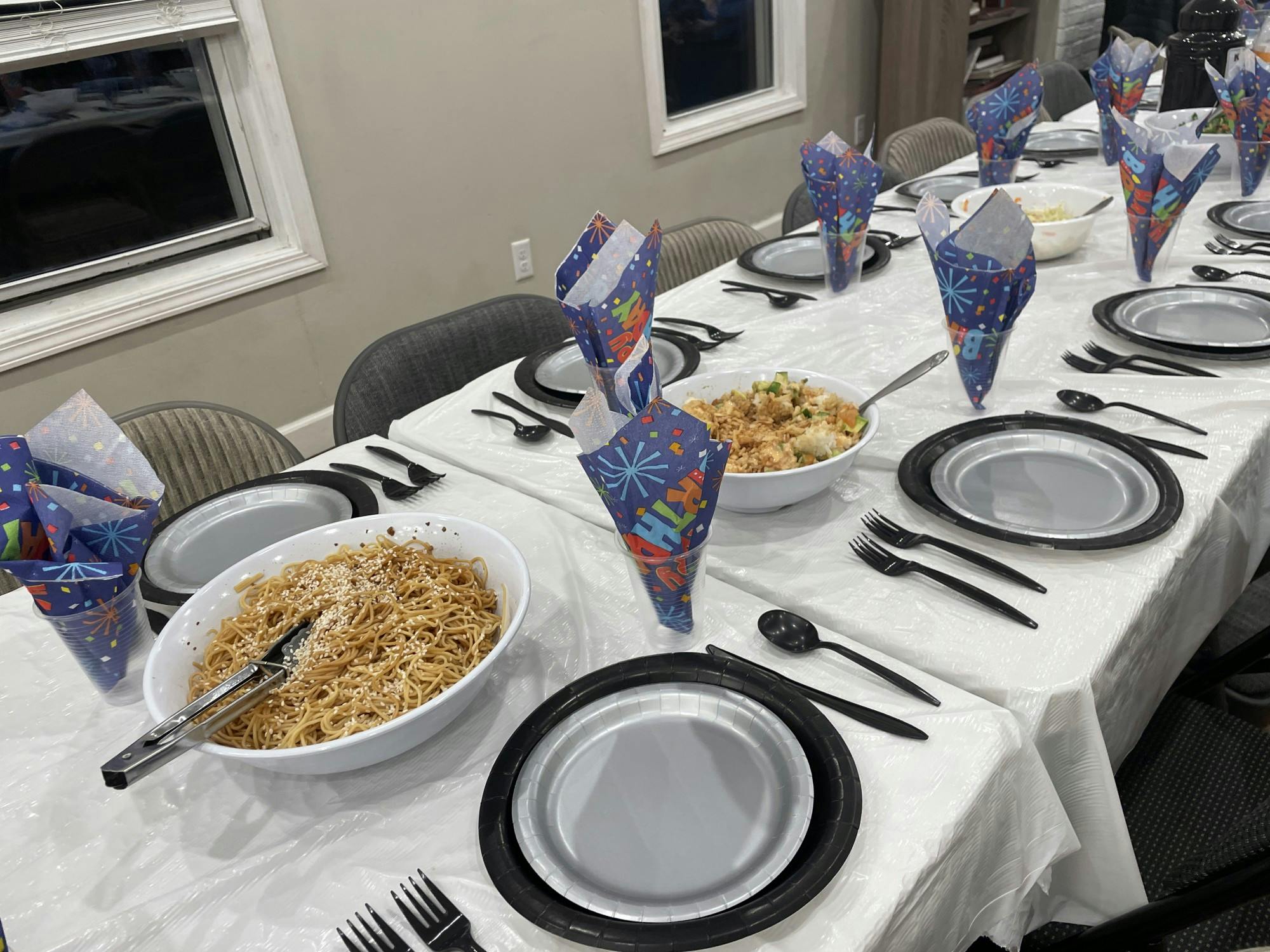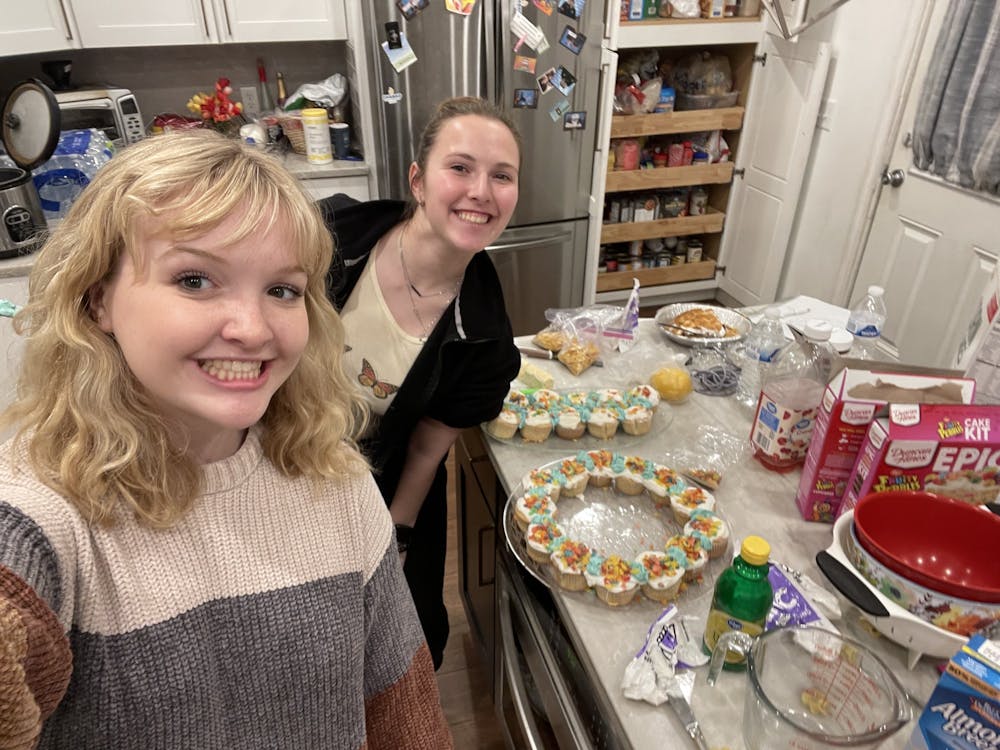Every Friday night, 40-50 students gather at the Chabad House for a beloved weekly tradition: Shabbat dinner.
Chabad, a worldwide Jewish outreach organization with a large presence on college campuses, was introduced to the Miami community in 2013 by Rabbi Yossi Greenberg and his wife Mushka, who wanted to create a home away from home for Miami’s Jewish students.
At Miami, Jewish students comprise 6% of the student population. For junior media and communication major Maya Mehlman, moving from her predominantly-Jewish hometown to Miami was a culture shock.
“Coming to Miami, I was the first Jewish student a lot of people met,” Mehlman, who spends her Thursday evenings helping in the cooking club for Shabbat dinner, shared.
After coming to Chabad, Mehlman quickly found a sense of belonging.
“Chabad is homey. It’s welcoming,” Mehlman said.
Many students echoed the same sentiment.
“I’ve been coming since my first semester,” first-year Lindsey Toph said. “It’s family here.”
Miami Chabad does not subscribe to labels: Chabad is a community for all, no matter what sect of Judaism or religious background guests come from.
As a first-time visitor of Chabad, I was warmly welcomed by the Greenberg family and student volunteers, who guided me as I learned new recipes and the ins-and-outs of running a kosher kitchen.
As a Jewish household, Mushka keeps a kosher kitchen: meat and dairy are stored and prepared in separate locations with separate utensils, and all ingredients are kosher certified.
In a community like Oxford where there are neither kosher grocery stores nor kosher restaurants, the Greenbergs ship in kosher meat from Chicago and home-cook nearly every meal. For Jewish students with kosher lifestyles, having no kosher dining halls at Miami poses hardships.
Enjoy what you're reading?
Signup for our newsletter
When senior Maggie Bogomolny tried keeping kosher during the holidays, it was “close to impossible” to eat kosher on campus.
At Chabad, students can enjoy a four-course, home-cooked kosher meal free of charge for the Shabbat, or Jewish sabbath. As I helped prepare staple Shabbat dishes — such as kugel, a Jewish noodle dish — I chatted with first-year math education major Kayle Sacksteder, who guided me through Chabad dinner classics.
“We have challah, chicken, matzo balls, sushi salad…the s’mores pie is the best,” she commented.

First-year math education major Kayle Slacksteder pipes frosting onto birthday cupcakes.
Sacksteder, who was raised in a Jewish and Christian household, started coming to Chabad first semester as she identified more with her Jewish roots. “I had grown up around so many Jewish people, so not having a community here was weird,” she explained as we decorated birthday cupcakes together.
This week’s Chabad dinner was extra special: the Greenbergs’ oldest child was celebrating his tenth birthday.
When I walked into the Greenbergs’ living room for Shabbat, the room was bustling with excitement: old friends chatting, new friends meeting and children running around playing games.
During Shabbat, students take a break from their phones and enjoy the fellowship of the Chabad community, sharing stories from their week and chatting about their plans for the rest of their night.
Dinner opens with prayer songs, spoken in either Hebrew or English, and netilyat yadayim, a hand-washing ritual done before eating challah, a Jewish bread. Before anyone eats, a prayer is given to thank the woman of the home, Mushka, for her hard work in preparing our four-course feast.
For the opening course, the table was lined with challah, pecan salad, coleslaw, noodles and — a crowd favorite — sushi salad, an amalgamation similar to a poke bowl with rice, fish and cucumber, made by Bogomolny.

The opening meal on Shabbat consists of salad (pictured), challah and fish.
“I love cooking with Mushka and hanging with the kids,” Bogomolny said. Her sushi salad, similar in flavor to a california roll, was an excellent start to the meal.
For the second course, Mushka brought out matzo ball soup. Growing up outside the Jewish tradition, I had never tried matzo ball soup before. One bite of matzo ball soup in, and I knew I had found a new favorite soup: it tasted hearty, with a dumpling-like consistency and delicious croutons for texture.
When students from Chabad are sick, the Greenbergs often send a cup of matzo ball soup to help remedy them.
For the third course, it was time for Rabbi Yossi’s famous fall-off-the-bone chicken.
“The chicken is bomb,” sophomore Max Montalbano told me.
I couldn’t agree more: it was the best-cooked chicken I had ever had.
Montalbano, an architecture student from New York, initially came to Chabad to connect with his roots. “It started off as a way to connect to my heritage, but then it became a family.”

For the special Chabad dinner on Feb. 24, the table was decorated with ‘happy birthday’ napkins.
Strangers quickly become family at Chabad dinner. Students pass each other helpings of food, fill up each other’s cups of grape juice and sparkling water and introduce themselves without hesitation. Twenty minutes into the dinner, I felt as if I had known the students for months.
As we ate, Rabbi Yossi had us share a happy moment from my week. Students shared fond memories, good test scores and job offers. For me, the highlight of my week was dinner.
For dessert, we enjoyed birthday cupcakes: fruity-pebble-flavored, at the request of the birthday boy. At the end of the dinner, Chabad closed with singing classic Jewish songs and offering a prayer.
Chabad dinner is more than just a dinner: it is a family, a tradition and a home. Chabad makes sure that Jewish students can enjoy the cuisine that reminds them of home, even if home is hundreds of miles away.




